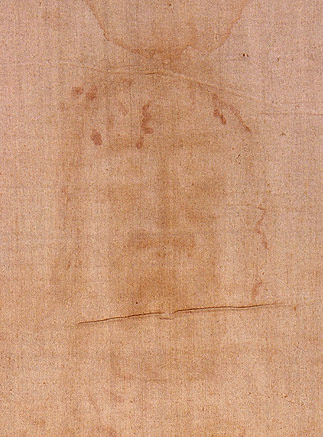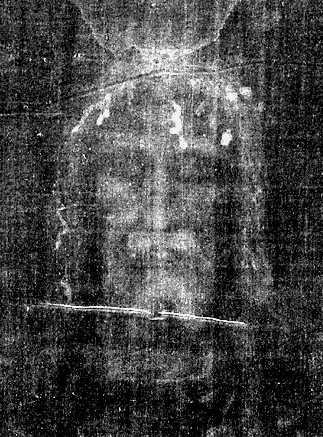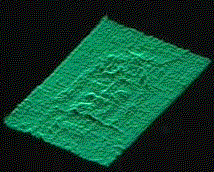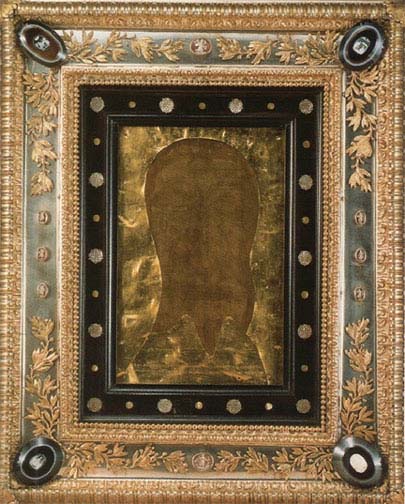Skip to comments.
[Shroud of Turin] Comments About the Recent Experiment of Professor Luigi Garlaschelli
Shroud.com — Comments About the Recent Experiment of Professor Luigi Garlaschelli PDF ^
| 11/3/2009
| Thibault Heimburger, MD
Posted on 11/03/2009 7:18:11 PM PST by Swordmaker
Recently, a new hypothesis about the origin of the image seen on the Turin Shroud has been presented by Prof. Luigi Garlaschelli1 during a press release. The results of the experiments based on this hypothesis were shown and the explanations and photographs are available on the author web site2.
Starting from these data and some complementary explanations kindly furnished to me by Prof. Garlaschelli, it is now possible to begin to examine the plausibility of this hypothesis.
The hypothesis of Prof. Luigi Garlaschelli (L.G. in the rest of the text) can be briefly but accurately summarized.
A medieval artist originally used powdered ochre and applied it on a linen sheet laid over a body using a simple frottage technique. Only the most prominent features (elbows, hands, knees, upper parts of the legs and arms) were rubbed in such a way, otherwise large distortions would have been observed (experimental observation). Therefore the sheet was removed from the body and the image free-hand completed on the flat cloth. For the face, a bas-relief must be used. This is the original Shroud image as it was made and probably seen in the first decades or centuries. As red ochre is an earth pigment, it is “safe to assume that it should contain at least traces of non neutral compounds ...like humic acids, salts or organic impurities” (personal communication). Such impurities will cause with time a discoloration of the fibers. This discoloration results from the degradation (chemical etching) of the cellulose of the linen fibers. Meanwhile, the pigments particles which were not bound to the fibers fall down so that the image, as it is seen today, is almost only due to the discoloration described above.
EXPERIMENTS AND RESULTS
It is important to understand that 2 different experiments were carried out.
In the first experiment, the dry powdered pigment (“red ochre only”) was rubbed on the sheet as described above. The result is shown in Fig. 1a and 1b3. As explained, for L.G., this is probably the kind of image originally seen on the Shroud. LG tried to find solid acids or salts to be mixed with the pigment to mimic the impurities assumed to be present in the original medieval red ochre. He failed and found that “solid acids or salts without water do not leave any trace in the following artificial ageing process” (personal communication).
Therefore, he tried another method (second experiment) with 1.2% of sulfuric acid in water mixed with a blue pigment (cobalt blue). He got a semi-fluid “paste” that he applied on the sheet in the same way. Then the colored sheet was artificially heated (3 hours, 140°C.) to mimic ageing and washed to remove the blue pigment. The lack of blue color after heating and washing shows that the resulting image is only due to the action of the diluted acid. The resulting image is shown in Fig.8 and 10.
LG concluded: “We have also shown that pigments containing traces of acidic compounds can be artificially aged after the rubbing step (by heating the cloth in an oven) in such a way that, when the pigment is washed away, an image is obtained having the expected characteristics as the Shroud of Turin. In particular, the image is a pseudo-negative, is fuzzy with half-tones, resides on the topmost fibers of the cloth, has some 3D embedded properties and does not fluoresce”.
COMMENTS:
It is important to recognize that, for the first time, an impressive entire Shroud-like image has been produced. However it is very difficult to comment and discuss the conclusions of the author. Why? Because, if we try to truly understand the Shroud image, according to his image formation process hypothesis there should be some kind of mixture of his two different experiments. The first experiment (“red ochre only”) is supposed to show the spatial distribution of the color on the Shroud (after the removal of the dry pigment), while the second experiment is supposed to show the color and some physical characteristics (reflectance, lack of fluorescence) of the image resulting from the degradation of the cellulose by the non neutral impurities associated with the dry ochre pigment.
Why does L.G. think that the medieval forger used a dry powdered pigment and not a paint in its usual sense (pigment in a binder or alternatively in water)? Because he found that it is much easier to obtain a Shroud-like image than with a fluid mixture: “this would explain why the image is so fuzzy, with half-tones and different from a purely contact imprint” (personal communication). L.G. recognizes that it is a “drawback” of the method. “Rubbing slurry will not produce the same fuzzy results as rubbing a powder. If you compare the “ochre-only” image from my webpage and the “final reproduction” (done with acidic slurry), the differences are obvious”.
I think that this interesting observation is much more than a simple “drawback” of the method.
Looking at the ochre-only image, it is true that the borders are more or less fuzzy (see for example the thighs after enlarging the photography). The image at large scale has well-defined borders but it is possible that the white color of the background contributes to this impression.
However, it is very doubtful that the Shroud image could be obtained with this method using a dry pigment for the following reasons:
- The Shroud was rolled and folded many times and most if not all the dry powder (and the impurities) would have been lost a long time before the chemical reactions between the acidic impurities and the cellulose could have produced the color. In addition, the powder should have been lost evenly in all the areas of the image which is doubtful: we should more probably see some kind of “patchy” image and not the continuous image of the Shroud;
- The fact that “solid acids or salts without water do not leave any trace in the (..) artificial ageing step” cast a strong doubt about the possibility for traces of solid impurities to leave any color on the sheet in the conditions of normal ageing at ambient temperature within decades or even centuries. At least the testimony of the Poor Clarisses who performed the 1534 restoration strongly suggests that the Shroud image had at the time the same color and the same “ghostly” character than the image as seen today. It is much more likely that the chemical reactions that are supposed to give the discoloration can not occur at all in solid phase.
- Even if the dry powder method gives some kind of fuzzy image with half-tones, this is only true for the large structures like the arms and the legs. If one looks closely at the “ochre-only” image, it is obvious that the half-tones and the fuzzy borders are much less evident or even absent in the areas corresponding to small structures and non-contact areas like the fingers and the face. In fact, it is not a surprise because all the previous attempts that have used the same “bas-relief” method failed to reproduce this fundamental characteristic of the Shroud: the extraordinary detailed correlation between the luminance level and the relief of a highly realistic visage. The only 3-D photography available seems to be that of the “final reproduction” (second experiment), Fig.5, but there is no doubt that its characteristics might be essentially the same than those of the 3D properties of the ochre-only image. It is not a true 3D: it is almost only made of “flat plateau” (contact) and “valleys” (no contact) with abrupt “vertical cliffs” between them. To the contrary, the Shroud has true 3D properties, i.e. fine variations of the “altitude”. The well-known 3D image of the face of the Shroud image shown in Fig.4 is the first one obtained with the famous VP8. But since this time, thanks to the progress of the digitalized image processing (also after the removing of the effect of the “bands” which “hides” the lateral parts of the image of the face), many other 3D pictures of the Shroud image have been obtained.
To illustrate what I mean, I show bellow some examples:
- Fig. A is another example of Shroud-like image obtained in July 2005 through a bas-relief method similar to that used by LG (dry powder on a bas-relief), shown in the French “science et Vie” Journal.
- Fig. B is the 3D rendering kindly furnished by Christophe Mignot (Engineer in physical sciences, specialized in Image processing and 3D analysis) who used his professional software “MountainsMap”.
- Fig. C is the Shroud image after elimination of the weave, the blood stains and the water stain using different filters
- Fig. D is the final 3D rendering in exactly the same conditions as Fig. B. It is important to notice that no information has been added during the whole process.

We must realize that the “modern artists and researchers” (including LG), know that they have to work in such a way that they have to produce a Shroud-like image with these properties (half-tones and the related true 3D characteristics). Up to know they all failed. What is the probability for a medieval forger, who obviously could not have in mind these properties, to produce by chance an image having these properties? Probably about 0%. In other words, this method does not work in practice although it could work in theory.
We turn now to the second experiment described above which gives the final result (Fig. 3, 5, 8 and 10 in L.G. Italian paper). One must recognize that it is up to now the best Shroud-like image never produced. Beyond the resemblance, there are many positive points in this attempt to reproduce the Shroud image: the author implicitly agrees with some of the most fundamental results of the STURP: the image color, as it is now, comes from a chemical discoloration of the fibers and not mainly from pigments particles.
L.G. image color results from some kind of chemical acidic degradation of the cellulose of the fibers which is very similar to the dehydration/oxidation of the STURP findings. Of course the difference is that L.G. thinks that this color results from impurities associated to red ochre pigment particles, i.e. in the context of a “paint” after the natural removal of the pigment.
The design of the experiment is so that the final color is only due to the action of the acid contained in its experimental mixture. Because the chemistry of the Shroud-like image and that of the real shroud image are very similar, the lack of fluorescence and the similarity of the color and of the reflectance spectra are not surprising.
Let us now examine the results:

The difference is obvious: the LG pseudo-shroud image is made of accumulations of more or less dark stains without any half-tones and again no color at all in non-contact areas (here between the nose and the cheek for example). The Shroud shows exactly the opposite properties.
The properties shown here by the pseudo-shroud are fundamental properties of the method: “frottage”. This is also shown by the high percentage of saturated pixels. In 2002, Fanti and Moroni4 have shown that the percentage of saturated pixels in an experiment of Joe Nickel very similar to that of L.G. (iron oxide powder with traces of sulfuric acid on a bas-relief on which a sheet was then laid and rubbed with cotton wool) was 60% (+/- 5%) while the percentage for the Shroud face is 23% (+/-5%).
Let us now compare the results at thread level:



Here again, the difference is clear. The L.G. image resembles a contact image (see Fig. G for comparison) while the Shroud image is not. The hue of the L.G. image is clearly the result (at least on some threads) of differences in the color itself while the color seen on the shroud is essentially the same (shading results from different numbers of colored fibers per unit area: areal density).
At fiber level: unfortunately, we have no image of colored fibers from L.G. experiment under the microscope. However, it is also doubtful that the color distribution on L.G. fibers resembles that seen on the body-image fibers of the Shroud. If the color results from a chemical reaction between impurities associated with a pigment and the fibers, we have to assume that the color is more or less spatially distributed as the pigment is.

Therefore, it is difficult to imagine that the color in L.G. hypothesis could be uniformly distributed all around and along the fiber as a very thin coating. To the contrary, we have to assume that we might see some kind of many tiny colored patches. However it is only a hypothesis.
There are many other debatable claims in the Italian paper of L.G. that will not be discussed here, except, briefly, the question of the blood. L.G.. wrote: “I have absolutely not tackled the problem of blood stains (...)” (personal communication). At least, it should have been interesting to try to know why and how the artist could have painted the “blood” before the image (it is proved that there is no image color under the blood) and how one could explain the presence of a fluorescent halo (not seen with the naked eyes) around his “blood stains”. (“The stains are not fluorescent and have no halo” L.G., personal communication).
CONCLUSION:
L.G. concluded: “We have also shown that pigments containing traces of acidic compounds can be artificially aged after the rubbing step (...) in such a way that, when the pigment is washed away, an image is obtained having the expected characteristics as the Shroud of Turin. In particular the image is pseudo- negative, is fuzzy with half-tones, resides on the top-most fibers of the cloth, has some 3D embedded properties and does not fluoresce”.
I think to the contrary that the image has none of these characteristics (except negativity and non- fluorescence). L.G. used a sophisticated method and a new interesting hypothesis, and he got the best Shroud-like image today. It is interesting to notice that even so, the properties of his image remain in fact very far from the fundamental properties of the Shroud image.
For the moment, the Shroud image remains unfakable.
ACKNOWLEDGEMENTS: I am very grateful to Prof. Luigi Garlaschelli for having accepted to answer to some questions and for his authorization to use the picture in Fig. F. Many thanks also to Prof. Giulio Fanti for his advices and for providing some pictures.
1 Presentation of the author : http://sites.google.com/site/luigigarlaschelli/
2
3 Figures and numbers are those shown in the Italian large file provided on the web page cited in the above footnote #2.
4 G. Fanti and M. Moroni: “Comparison of luminance between face of Turin Shroud Man and experimental results”. The Journal of Imaging Sciences and Technology. Vol.46, N°2, March/April 2002.
TOPICS: Arts/Photography; Religion; Science
KEYWORDS: shroudofturin
Here are the links to the original reports by Professor Luigi Garlaschelli:
http://sites.google.com/site/luigigarlaschelli/
http://sites.google.com/site/luigigarlaschelli/shroudreproduction"
Note that some of these articles require Microsoft Word and are in italian.
Here are some of the images referred to in the article above:




To: Alamo-Girl; albee; AnalogReigns; AnAmericanMother; Angelas; AniGrrl; annalex; annyokie; ...
A critical article on last months supposed proof that the Shroud of Turin is a forgery made in the medieval period with medieval materials. PING!
  If you want on or off the Shroud of Turin Ping List, Freepmail me.
|
|
|
2
posted on
11/03/2009 7:20:05 PM PST
by
Swordmaker
(Remember, the proper pronunciation of IE is "AAAAIIIIIEEEEEEE!)
To: Swordmaker
PRESENT!

3
posted on
11/03/2009 7:31:51 PM PST
by
JoeProBono
(A closed mouth gathers no feet)
To: Swordmaker
Why in the world would a medieval artist go to all the trouble of making a fake cloth that would stand up to futuristic testing, many, many years later? Nobody would have anything to compare it to to make it realistic as there wasn't anything like it, a photo, at that time.
If he wanted a cloth that people would venerate at that time that could be exploited for money and power all he had to do was make a carefully done thin painting on a cloth that either was old or he made to look old and he would have easily gotten away with it.
The forgery is positively rudimentary compared to the real Shroud of Turin.
4
posted on
11/03/2009 7:56:19 PM PST
by
Bellflower
(If you are left DO NOT take the mark of the beast and be damned forever.)
To: Swordmaker
5
posted on
11/03/2009 7:56:25 PM PST
by
Bob Eimiller
(appeasement "it's the idea that if you feed the alligator he will eat you last." Winston Churchill)
To: Bellflower
Agreed - so much more subtlety in the Shroud - true shroud of Christ or not; it’s far better done.
6
posted on
11/03/2009 8:01:58 PM PST
by
heartwood
To: Swordmaker
Which came first, the Shroud or the Veronica Veil?
I thought that when the computer images are compared their is a degree of details that could not be done "by hand".
Luigi is dancing in the dark!
7
posted on
11/03/2009 8:30:30 PM PST
by
Young Werther
("Quae Cum Ita Sunt - Julius Caesar "Since these things are so!")
To: Young Werther
Which came first, the Shroud or the Veronica Veil? Which Veronica veil? There are at least three. One held in the vatican is Linen and has no image worth calling an image:

Or another kept in Manoppello Italy the has the image of a man with a wispy beard... which is actually a self-portrait done by Raphael which has clearly visible paint pigments on it, particularly on the eyes and teeth. Raphael painted his self portrait on either Byssus, the rarest cloth on earth made from the fibers of a sea-urchin, or Cambric, a very fine French cotton used for veils, and sent it to Albrecht Dürer in response to a similar self-portrait Dürer sent to him.

If we go just by the legend of the Veronica, then the Veil predates that Shroud by at least a few hours, having supposedly been created on the Via Dolorosa just before the crucifixion and the Shroud being created a day or so after the crucifixion.
I thought that when the computer images are compared their is a degree of details that could not be done "by hand".
The only comparison done of two cloths by computer that showed such a degree of equivalence are the Shroud and the Sudarium of Oviedo, the sweat cloth that is supposed to have covered Jesus' face in death, where the blood stains share over 70 points of congruity. The Sudarium has a provenance that goes back to the fifth Century while the Shroud known provenance extends only back to the 14th.
8
posted on
11/03/2009 9:25:20 PM PST
by
Swordmaker
(Remember, the proper pronunciation of IE is "AAAAIIIIIEEEEEEE!)
To: Young Werther
Which came first, the Shroud or the Veronica Veil? Another Veronica candidate is the Holy Face of Genoa:

9
posted on
11/03/2009 9:28:59 PM PST
by
Swordmaker
(Remember, the proper pronunciation of IE is "AAAAIIIIIEEEEEEE!)
To: Swordmaker
These people are so pathetic.
What contortions they go through - idiotic.
10
posted on
11/03/2009 9:58:34 PM PST
by
maine-iac7
("He has the right to criticize who has the heart to help" Lincoln)
To: Swordmaker; 2ndMostConservativeBrdMember; afraidfortherepublic; Alas; al_c; american colleen; ...
11
posted on
11/04/2009 10:26:05 AM PST
by
Coleus
(Abortion, Euthanasia & FOCA - - don't Obama and the Democrats just kill ya!)
To: Swordmaker
I hope, at some point, that the Bishop of Turin, along with the Vatican, will allow samples to be taken from closer to the center of the Shroud, so that Carbon dating can be done on them. It is well known that there were repairs done on the Shroud during the Middle Ages, which likely accounts for the time frame given for the samples on which the dating was done several years ago.
If those samples are dated to the first century A.D. it would render moot all this other speculation.
12
posted on
11/04/2009 1:59:53 PM PST
by
SuziQ
To: Coleus
They’ve been arguing about the shroud since about 1300 AD. The church has never said yes or no, and a lot of bishops thought it was a fake.
It’s probably a fake...all the scientific stuff is interesting, but the clincher for me was that the textile studies showed a weave more common in medieval Europe than in Palestine of the first century.
13
posted on
11/04/2009 6:01:45 PM PST
by
LadyDoc
(liberals only love politically correct poor people)
To: Swordmaker
To: LadyDoc
It’s probably a fake...all the scientific stuff is interesting, but the clincher for me was that the textile studies showed a weave more common in medieval Europe than in Palestine of the first century. Actually, that is not the case. The Shroud was woven on a Wall Loom that was seldom used in medieval Europe. In addition the soapwort retting and hank bleaching techniques are not at all what was used in Medieval Europe and are what was used in the 1st century Palestine area. Other three over one weave patterns have been found at Masada.
15
posted on
11/05/2009 1:02:40 AM PST
by
Swordmaker
(Remember, the proper pronunciation of IE is "AAAAIIIIIEEEEEEE!)
To: Swordmaker
I stand corrected.
thanks
16
posted on
11/05/2009 3:06:54 AM PST
by
LadyDoc
(liberals only love politically correct poor people)
Disclaimer:
Opinions posted on Free Republic are those of the individual
posters and do not necessarily represent the opinion of Free Republic or its
management. All materials posted herein are protected by copyright law and the
exemption for fair use of copyrighted works.
FreeRepublic.com is powered by software copyright 2000-2008 John Robinson















